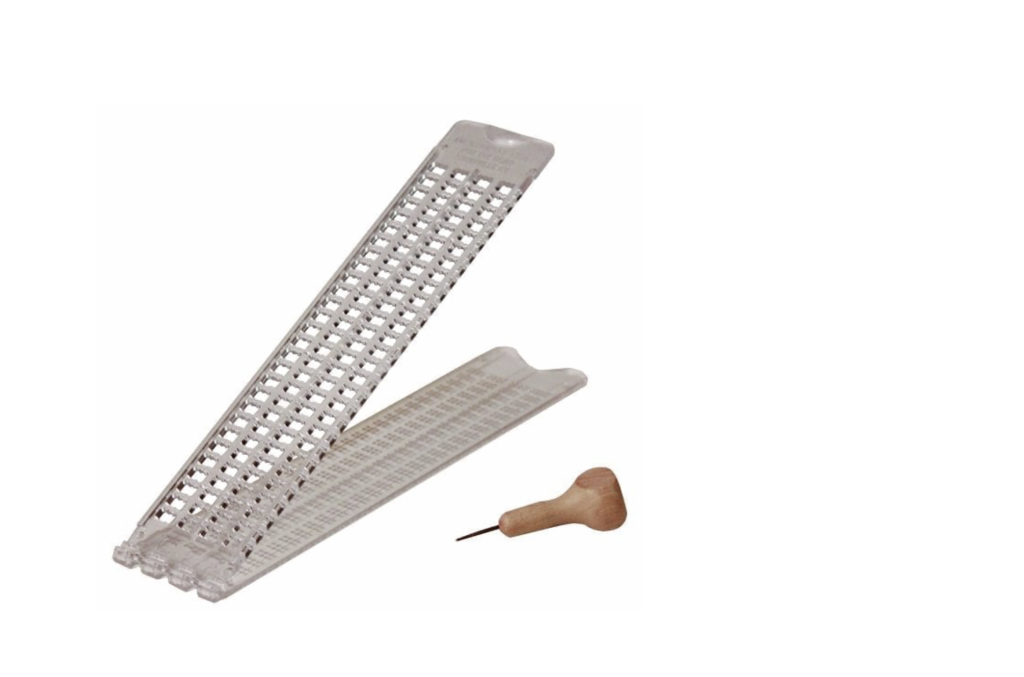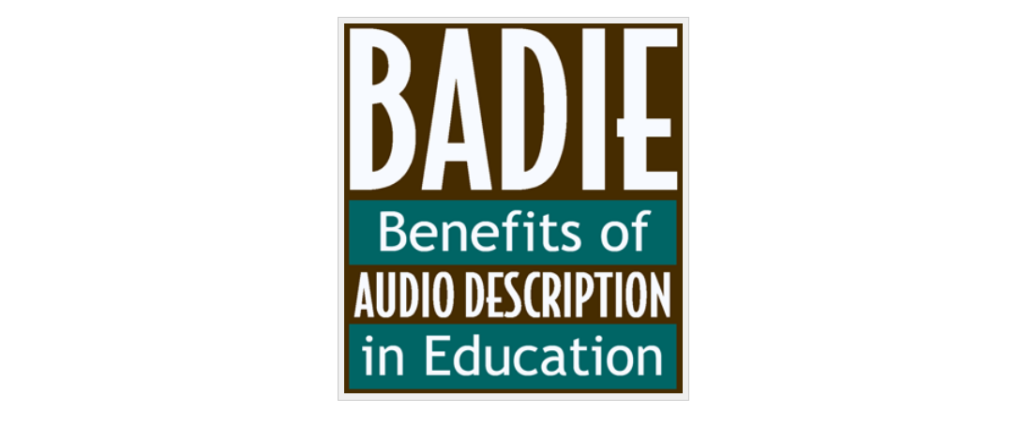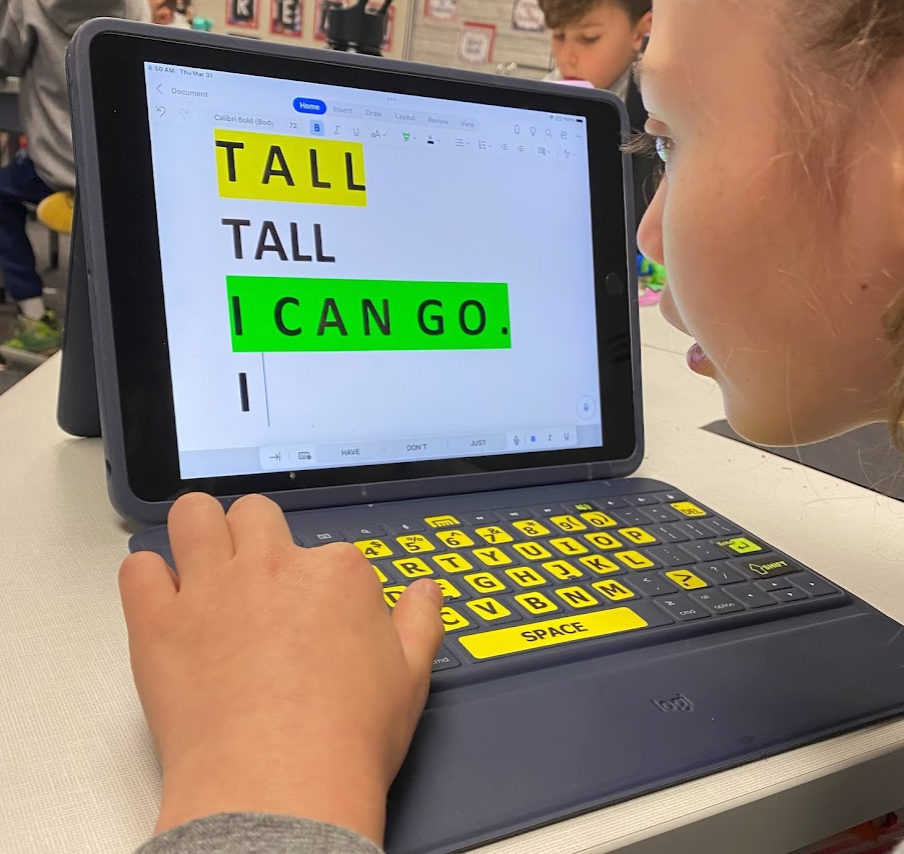
Writing includes information about the tools of writing, as well as about the writing process itself. The tools of writing include various methods for students with low vision, those who are blind, and those with multiple disabilities. The writing process refers to the creation of the content, which may be taught separately from the tools. Offering all children the opportunity to write, regardless of their abilities, is crucial to self-determination and models respect for each child’s ideas.
It is very important to do a Learning Media Assessment at regular intervals to determine the most appropriate media for an individual student based upon their current needs. Evaluation will need to take into account how tools will vary across environments and tasks. All of us use different tools for different purposes, e.g. a computer, a pen, and/or a smartphone may be preferred at various times for a range of tasks.
How can we provide access to expression?
Some students may experience tremendous frustration using specific tools, such as a braillewriter, a slate and stylus, or special pens and paper with bold lines. Many students are limited by their ability to use various writing tools, either because of additional disabilities or because they have recently lost vision and are new to braille. It is important to provide methods so that all children can freely and creatively express their ideas without struggling with the mechanics or tools.
It is sometimes challenging to find the most appropriate method for ensuring smooth access for students to express their ideas. The child should be able to both write down her ideas and have that written form read (understood) by others. Braille, print, pictures, gestures, object symbols, and many forms of assistive technology can be evaluated to find multiple avenues for expression.
One of the barriers for students with visual impairments can be that many writing prompts are based upon experiences, and a student may have difficulty relating to topics outside of their hands-on experience.. For instance, when a class is given the prompt “I went to the park and I saw 5 different kinds of ____,” a student who perhaps isn’t taken outdoors to play, or is kept quite close to their parent without the opportunity to explore, may not have much to say or may not find this topic motivating. The key to encouraging more written expression is to use the child’s lived experiences and preferred topics as the base for expanding expressive writing – while also finding ways to create new experiences, where possible.
Why do we write?
We all write various things in various formats throughout the day. From quick notes and lists, to carefully composed letters or documents, writing is a form of communication that many of us depend on in all parts of our daily routine. We write to keep track of things (appointments, things we must do, schedules), to stay in touch with others (email, letters, cards, quick notes), and to convey our ideas (stories, journals, compositions, scholarly papers). Writing checks, making lists, and filling out job applications are all important independent living skills. Regardless of the form we use, writing is one of the main ways that many of us communicate and stay connected.
How can we model writing for children who are blind and demonstrate that it is a part of daily life?
If children are unable to see others writing, they will benefit from knowing that others are writing throughout the course of the day. For example, we might say, “Before we go to the grocery store, let’s make a list of all the things we need to remember to buy.” Or, “I need to let Stewart know that I won’t be back in time for dinner. I think I’ll write him a note to tell him.” We can also read aloud email messages or letters that we write to friends and family members, and share the responses so that they get some sense of how the exchange of written communication works.
Creation of Content
What is the writing process?
Teaching the writing process focuses on the organization of ideas and expressing them in a format that others can understand. It differs from the mechanics of writing, as it is about the content of what is written, rather than the format. Both content and format are essential to being a successful writer.
How can students with multiple disabilities participate in writing activities?
Linda Hagood, Speech Language Pathologist, pioneered the idea of using play and collaborative storytelling to empower students with communication challenges to express their ideas creatively. Co-creating stories is focused on the process, rather than the product. That is, it focuses on expanding language and communication, self-determination, self-regulation, and creativity rather than a perfectly composed story. The adult is a support, rather than an authority, building on student interests and using props to expand playful exploration and expression.
See Playing with Words for specific examples, resources, and video demonstrations. See also Writing for Students with Multiple Disabilities.
Tools for Writing
Traditionally writing has included braille and print formats, and the use of a keyboard and assistive technology options have expanded those forms of expression with voice output, print, and braille displays. Writing can be interpreted more broadly for young children or students with significant multiple disabilities to include expressive language (“dictation” or helping to tell a story), the use of objects, tactile representations, or other symbols. Use of recording devices, communication tools, and gestures can all support student participation in writing activities. Teaching the use of specialized literacy tools is an important component of a student’s IEP.
Oral Strategies for Writing
Co-creation of stories/Storytelling
Storytelling offers opportunities for learners to practice sequencing ideas, establishing a narrative, and expanding vocabulary. Props can be used to graphically represent events in the story, and stories can be recorded and put into written format (braille or print) afterward.
Dictation
For students at a beginning level, dictation can also be used to create an experience story, telling about a routine or special event in the child’s life. This can be done by an adult or other student transcribing the student’s words into print or braille, or through the use of speech recognition software. Students can also use objects, partial objects, or tactile symbols to illustrate a story.
Additional Resources
-
Writing: The Forgotten Focus for Literacy and Communication Instruction, Linda Hagood for Perkins eLearning
-
Beyond Braillewriter Mechanics: Guidelines for Teaching Writing, Family Connect
-
Writing Strategies for Students with Visual Impairments: A Classroom Teacher’s Guide, SET-BC (Special Education Technology British Columbia)
- A Process Approach to Teaching Braille Writing at the Primary Level, Anna Swenson
- “Write” Tools for Students Who Are Visually Impaired, National Center to Improve Practice
- Signature & Handwriting for Students who are Blind or Visually Impaired, Teaching Visually Impaired



